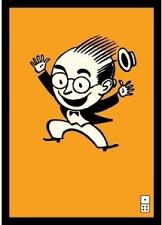
Yesterday’s post talked about a new Google brainstorming protocol, designed to ensure that great ideas see the light of day. The plan involves developing a prototype – even a crude one – that can be tested, tweaked, retested, and perfected. Too many great ideas sit on shelves or fall victim to analysis paralysis.
That was the basis of Seth Godin’s Poke the Box, written in 2011. This is Seth’s manifesto that screams “just do it.” He talks about the people who have many great ideas, but they have an inability to simply execute them. In Seth’s words:
“Starting means you are going to finish. If it doesn’t ship, you’ve failed.”
We all know people who collect lists of great concepts on legal pads, but they somehow can’t get started. Seth’s “initiate and ship” command is  what can take brainstormed ideas and bring them to life. These days in radio, delivering a consistently good sound is table stakes. In an environment where consumers can get whatever they want, whenever they want it on laptops, smartphones, and dashboards, the need to go further is paramount. That’s the way brand depth and loyalty are generated.
what can take brainstormed ideas and bring them to life. These days in radio, delivering a consistently good sound is table stakes. In an environment where consumers can get whatever they want, whenever they want it on laptops, smartphones, and dashboards, the need to go further is paramount. That’s the way brand depth and loyalty are generated.
Google’s “10X” approach discussed yesterday is a bar-raiser. Because big ideas require more unified execution. And that’s a tougher challenge to pull many different people together at a station to pull something big off.
I thought about Poke while reading a recent Rance Crain AdAge interview with Joe Sedelmaier, director of famous commercials like Wendy’s “Where’s The Beef?” and the fast-talking FedEx guy.
His belief is different than what you’d expect from a creative guy:
“The execution of an idea is more important than the idea itself.”
That’s a heavy statement, but when you consider how so many concepts get bogged down in meetings, bureaucracy, research, and more meetings, you can see his point.
And most managers would probably agree that while ideas are the currency, nothing matters unless things get done.
In the case of TV commercials, Sedelmaier often came up against the reality that there were often too many cooks in the kitchen. From the ad agency to the editors to the writers to the lighting engineers, it was easy for creative ideas to not get executed or to fall short. Ironically, his groundbreaking FedEx spot epitomized that pressurized environment of just getting it done. (Back in the early ’80s at WRIF, we hired the fast-talking guy, John Moschitta, to be our spokesperson for a TV campaign.)
While radio is an infinitely simpler business than television – with fewer people tasked with creating content – the need for speed and “thinking big” has never been more important. The audience craves new ideas and novel treatments of familiar concepts, whether it’s this year’s “Jingle Ball” or revitalizing the first quarter sales promotion.
And when you consider that the difference between good and great might come down to a station producing a big event (or two) each year, the need to execute flawlessly and on a big stage has never been greater.
Creative brainstorming combined with fast execution, are the new ingredients necessary in getting it done.
With better metrics than we’ve ever had before, measuring the quality of execution has never been easier or faster.
Execute. Ship.
Just like the fast-talking FedEx guy.
- Media And Technology In 2025: Believe It Or Not! - April 18, 2025
- In Radio, You Just Never Know - April 17, 2025
- The Secret To Making A Great Podcast (And Great Radio) - April 16, 2025




Leave a Reply